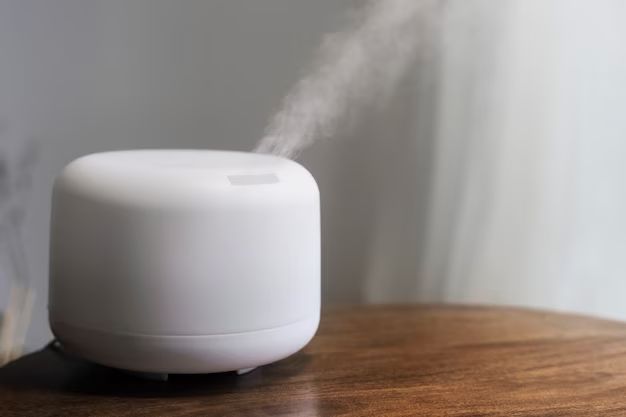Whole home humidifiers are devices installed on a home’s HVAC system to add moisture to the indoor air. They can provide benefits like relief from dry skin, scratchy throats, and static electricity. However, some people have concerns about the safety of whole home humidifiers. This article will examine the pros and cons of whole home humidification and help homeowners decide if it’s right for their home.
Page Contents
What is whole home humidification?
Whole home humidifiers are installed on a home’s existing HVAC system ductwork and plumbed into the water line. They work by pulling air from the return ducts, adding moisture, and distributing the now humidified air through the home’s supply vents. This raises the relative indoor humidity level home-wide.
Why do homes need additional humidity?
Most modern, energy-efficient homes are tightly sealed to prevent drafts. This also reduces natural air exchange with the outdoors. In colder climates, this means drier winter air gets trapped inside. Running heaters further dries out the air. Indoor relative humidity can dip below the ideal range of 30-50%.
Low humidity allows for greater static build-up and dries out sinuses, skin, and wood furnishings. Whole home humidification boosts moisture levels for comfort.
Benefits of Whole Home Humidification
Relief from dry air discomforts
Boosting moisture levels home-wide can provide whole-body relief from dry air issues like:
– Dry, itchy skin
– Cracked lips
– Bloody noses
– Dry, irritated sinuses
– Scratchy throat
– Static shocks
Humidified air prevents moisture from being wicked away from these delicate membranes and surfaces.
Reduce spread of bacteria and viruses
Dry air allows bacteria and viruses suspended in droplets to float longer before settling out. Proper humidity causes them to fall and settle faster so they’re less likely to be inhaled.
Protect wood furnishings and floors
Low moisture causes wood to shrink and crack. Floor boards can separate and furniture joints split. Maintaining 35-45% relative humidity helps preserve wood elements.
Less cleaning needed
Dust doesn’t fly as easily in more humid air. Surfaces don’t collect static allowing dust to settle faster.
Potential Risks of Whole Home Humidifiers
While whole home humidification provides benefits, there are some potential downsides:
Can encourage mold growth
Excess moisture on surfaces can allow mold to germinate and grow. Dust particles can serve as food. Humidity should be kept between 30-50% to inhibit mold.
May damage materials
High moisture levels can corrode metal components, warp wood, and degrade adhesives. Proper humidity balance helps prevent this.
Mineral dust
Hard water used in humidifiers contains minerals that become airborne. This settles as fine white dust on surfaces.
Drafts and condensation
The warm, moist air from humidifiers can create unwanted condensation on cooler window surfaces. Avoid directing outlets right at windows.
Running costs
Humidifiers use water and energy to operate. This adds to utility bills. Newer models are more efficient.
Harbors bacteria
Stagnant water in reservoirs can allow bacteria and fungi to grow. Regular cleaning and maintenance is key.
Key Considerations When Using Whole Home Humidifiers
Here are some tips on using whole home humidification safely:
Maintain proper humidity level
Use a digital hygrometer to monitor indoor humidity. Ideal levels are 30-50% relative humidity. Too low or high creates issues.
Watch for condensation and mold
Condensation on windows and mold indicate humidity is too high. Scale back humidifier output.
Clean and replace filters
Clean humidifier filters regularly as recommended. Replace per manufacturer instructions.
Use distilled or filtered water
To reduce white dust residue, use distilled or demineralized water in the humidifier reservoir.
Direct airflow properly
Avoid directing humidified air right at exterior walls and windows. Angle supply registers into the room.
Have a professional assess home
A technician can evaluate insulation, air exchange rate, and tightness of construction before installing a humidifier.
Monitor humidistat
Ensure the humidistat controlling the humidifier is accurate. Replace if needed.
Service annually
Have an HVAC technician service the humidifier annually to keep it operating safely and efficiently.
Types of Whole Home Humidifiers
There are two main types of humidifiers used in whole home applications:
Steam humidifiers
Steam humidifiers consist of a metal chamber that boils water to produce steam. The steam is injected into the supply ducts.
Pros:
– Effective at humidifying
– Fast humidification response time
– Steam helps clean ducts
Cons:
– Risk of burns from steam and hot surfaces
– Potential to overload HVAC system
Cool mist humidifiers
These use a wick filter, cold water, and a fan to produce fine cool mist. The fan injects the mist into supply ducts.
Pros:
– Safer water temperature
– Evaporates evenly
– Minimizes potential for condensation
Cons:
– Can take longer to humidify
– More prone to bacterial growth
– Wick filters need replacement
Comparison of Steam & Cool Mist Humidifier Types
| Feature | Steam Humidifier | Cool Mist Humidifier |
|---|---|---|
| Humidification Method | Boils water to produce steam | Wick filter and fan produce mist |
| Efficiency | Very effective | Slightly less efficient |
| Safety | Burn risk from steam and heat | Safer water temperature |
| Maintenance | Requires descaling | Wick filters need changing |
| Air Cleaning | Steam helps clean ducts | Less effective at air cleaning |
| Cost | Higher upfront cost | Lower initial cost |
Conclusion
When properly installed and maintained, whole home humidifiers can safely provide the benefits of balanced humidity throughout a home. This relieves dry air problems for comfort and health. However, too much humidity creates risks of condensation, mold growth, and damage.
Careful humidity monitoring, keeping levels in the 30-50% range, using pure water, direct airflow thoughtfully, and diligent maintenance will optimize benefits while minimizing risks with whole home humidification. Considering pros, cons, types of systems, and following best practices allows homeowners to make informed decisions about humidifier safety.
